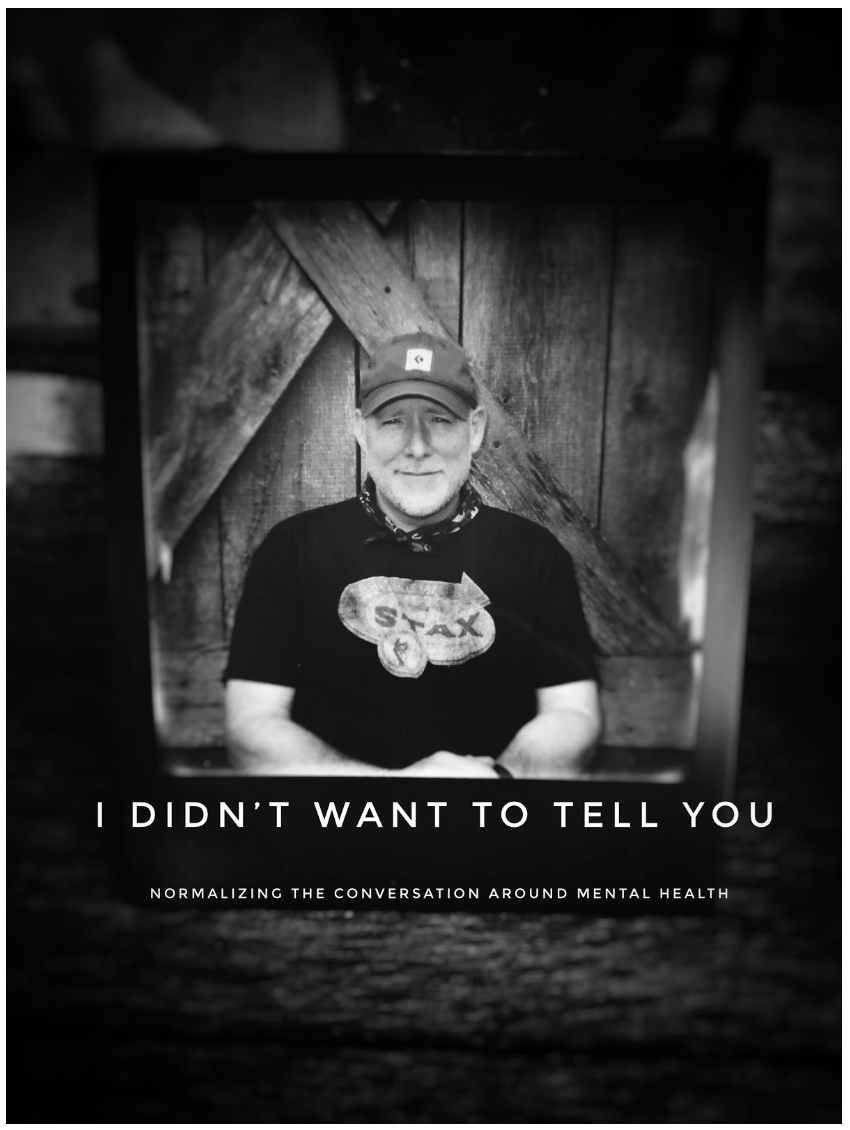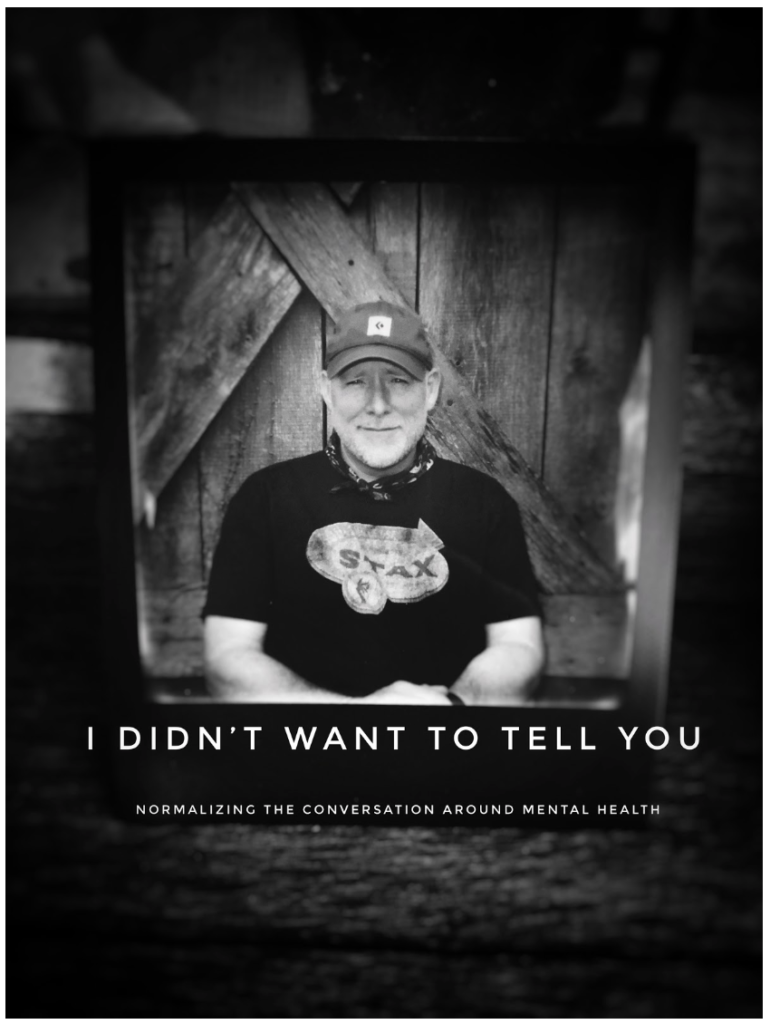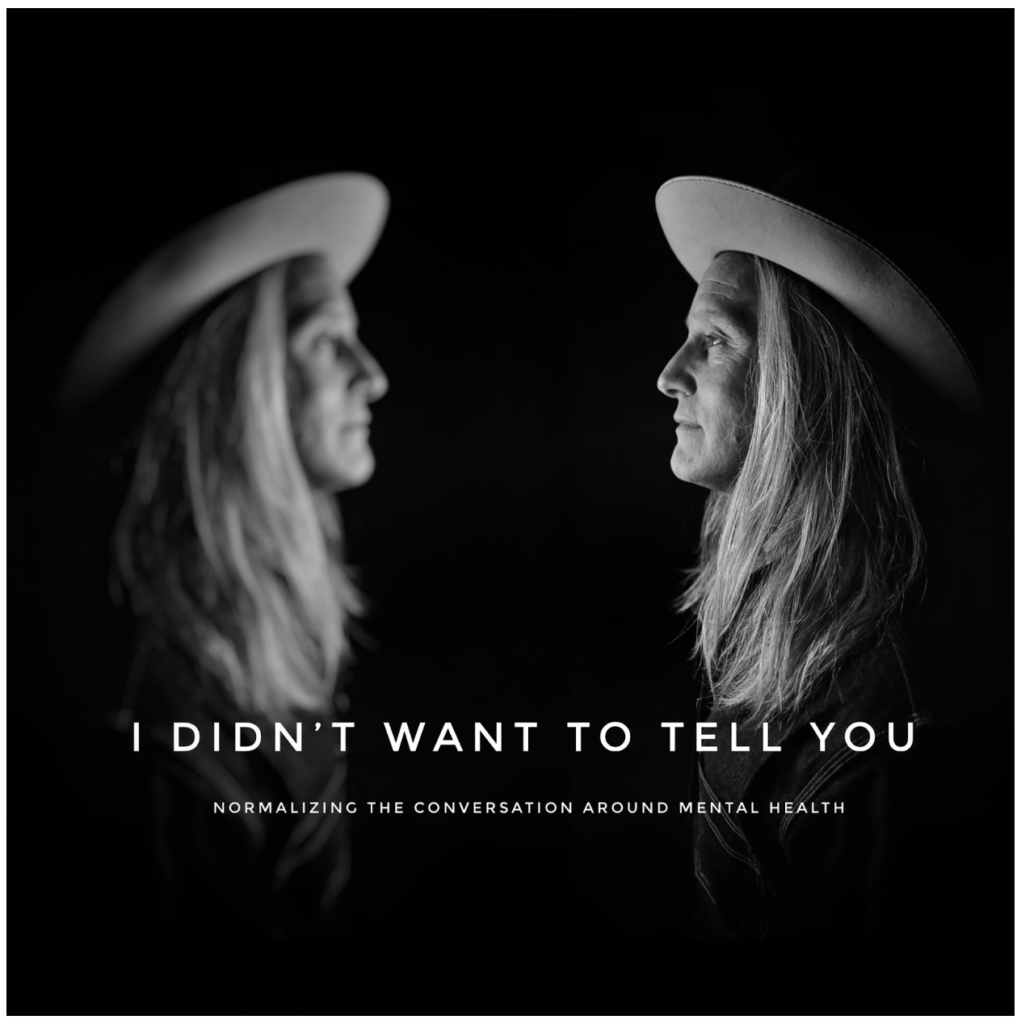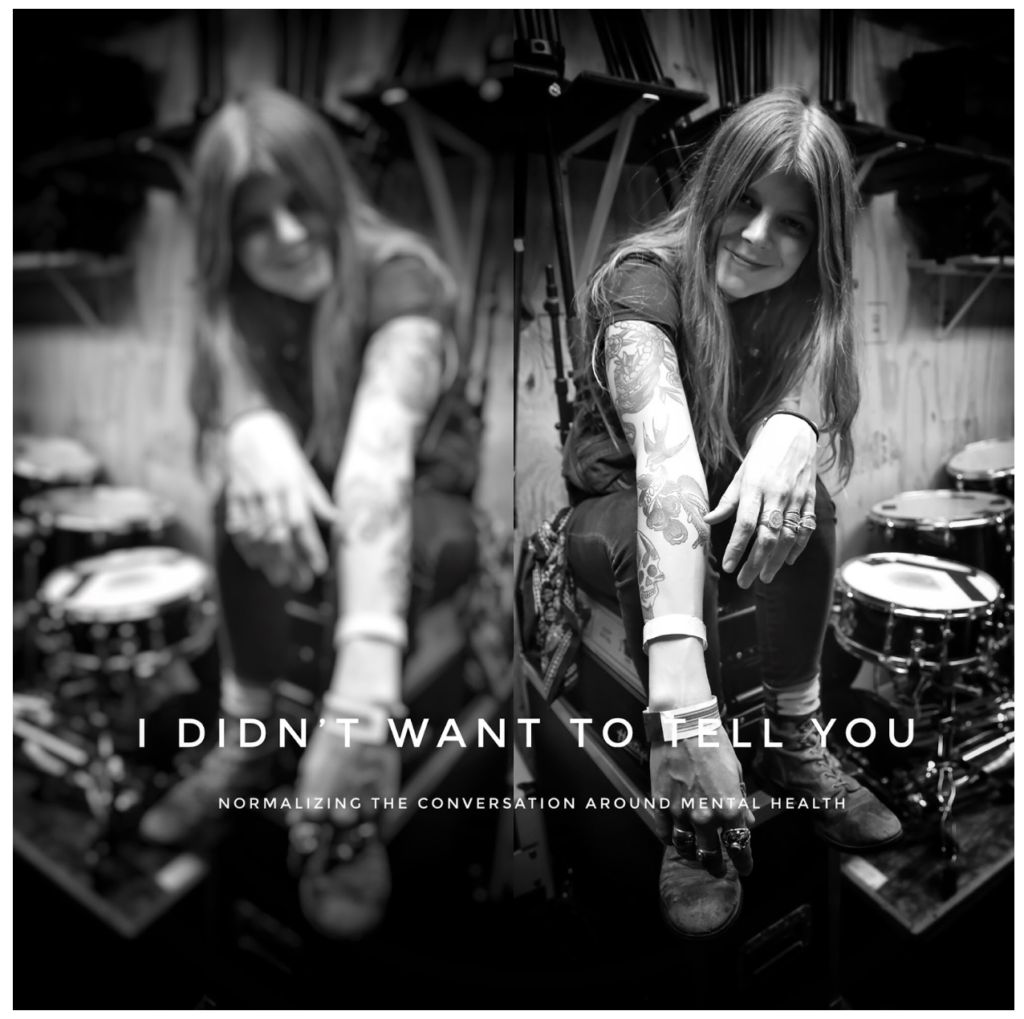An Interview With Chad Cochran: I Didn’t Want To Tell You
If you enjoy seeing some of your favorite musicians captured beautifully, you should be following Chad Cochran on Instagram. His portrait, landscape, and live music photography are all inspiring and he does an amazing job capturing the nature of the subject in the frame. Recently, No Depression published six portraits and stories from his project “I Didn’t Want To Tell You: Normalizing the Conversation Around Mental Health” for its Wellness Issue. The series in the print edition featured John Paul White, Lydia Loveless, Sarah Shook, Steve Poltz, Jamie Harris, and Elizabeth Cook. Through his Instagram account, there are many more stories, all well worth reading.
Perhaps at no other time in my memory, mental health for musicians is a common conversation. This is, of course, because of the tragic spate of musicians taking their lives. But it is also because of musicians speaking openly about addiction, anxiety, depression, and mental health in a way that would have been taboo only a decade ago. And it is because of projects like Chad’s that have, in a beautiful way, clearly reminded all of us that we’re not alone, that everyone struggles, and that community is a powerful part of emotional and mental health.
Before we share the interview, If you are thinking about suicide, are worried about a friend or loved one, or would like emotional support, please call the National Suicide Prevention Lifeline, available 24/7 across the United States: 1-800-273-TALK. You are not alone and help is available.
RLR: Can you talk about the inspiration for this project? Where did it start?
CC: I got started as a rural landscape photographer in Ohio and lot of people became familiar with my photography work [as a landscape photographer]. I was a late bloomer–I didn’t even own a camera until I was about 40 year old. I live in Ohio, I grew up in rural Ohio, and when I started taking photos, I sort of went back to what I knew. I grew up in a small town, and I used to see the feed mill, and farms and that kind of thing all the time; so that’s what was familiar to me, it’s what I was drawn to–I always jokingly refer to it as the dark side of Ohio, that’s what my aesthetic is.
A few years later, Lydia Loveless reached out to me via twitter, and basically said, “Hey, you take really pretty pictures of Ohio, would you be interested in putting a human being in there?” And I actually said no, because it wasn’t what I did. I wasn’t a portrait photographer, but after some back-and-forth, I said that I would give it a shot. And I wasn’t very good at it. I did a session with her, maybe with BJ Barham also, and there might’ve been someone else too. None of them were very good. It wasn’t my comfort zone, I didn’t know what I was doing, and, honestly, didn’t even really how know to operate a camera that well back then.
Somewhere around 2014, I found out that Americanafest existed. I didn’t even know it was a festival. I told my wife about it on a Thursday, and it had started earlier in the week, and she said, “You should just go.” And I said, “No, it’s happening, it already started.” And she said, “Well…you’re an adult. You know how to book a hotel room, you know how to drive a car. Start driving south and we’ll figure it out from there.”
And after I started doing portrait sessions with people, I started to hear a lot of the same stories–either some type of childhood trauma, some type of addiction, alcoholism or drugs…And it seemed over the years that there was, thematically, a lot of similar conversations coming from the people I did portraits with.
I had a vested interest in this as well. At the time, I was dealing with my father, who was an opioid addict. And I was dealing with some of those things myself, [asking] am I handling this the right way? I have three children–should he be more involved in their life? Less involved? I struggled with that, so I had some things I was dealing with at the same time.
And it started like this: what if I did a photo series where I did a portrait of somebody and they told me a secret story–a story they’d never told anyone, or a story they’d only told a small circle of friends. And that went absolutely nowhere. Dead in the water. And I felt so good about it–this is going to make a difference; it’s going to be euphoric, it’s going to be rainbows and unicorns from here. And that’s not at all what happened. No publication would return my calls or my emails. Even some of the artists that I’d become friends with said, “That’s a cool idea … I mean I’m not going to do it, but it’s a cool idea.” [Laughs]
I don’t really consider myself to be bull-headed, but I think that I just didn’t get it, and I wasn’t listening well. It was only about a year ago that I changed the direction of the series. It’s always been called, “I Didn’t Want To Tell You,” but I changed the phrasing of the question. I changed it to: tell me how mental health has played a role in your life. It was perfect. What it did was to provide people the opportunity to tell that story however they chose to. They could talk about themselves, a spouse, a family member, a friend. It gave them some fluidity on how they wanted to take that story and that was what changed.
RLR: It sounded like you had some ideas initially about what to project would do. And anytime we do something creative, there’s a little movie playing of what will happen, or our hopes: people will realize something, or artists will feel more supported, etc. How has the project shifted in terms of your hopes for it in the world?
CC: Well, the name of the project is, “I Didn’t Want To Tell You,” and the tagline that goes with it is: “normalizing the conversation around mental health.” That’s really what I wanted to do, but it’s taken on different faces through the process.
The initial idea was that it would be an art show. It was going to be a double frame: there would be a photo of the person on one side, and there would be a written or typed out version of their story on the other side. That was it. That was how I had envisioned it: beginning and ending and that was it. But it definitely has morphed.
RLR: In some ways because the medium has morphed not insignificantly in the past five years.
CC: Absolutely. And, you know, the other part of this is that the mental health conversation, fortunately, is becoming a little more normalized. Sadly, we’ve lost some great people in the process. Their loss has been tragic but hopefully it’s opened the doors for others to maybe speak up who wouldn’t have. Luckily we’re at a point where the conversation’s a little easier to have.
So today, I’ve had publishers reach out about a book. I was very fortunate to work with No Depression on their Fall Wellness issue, where they ran six of the stories. And that really got it out there for people who had not heard of it previously. But I am honestly still formulating where it’s going to go. I’m not even sure the project will end with me being the only photographer. I’ve had so many people reach out to me from different areas, but I have a full-time job, so I can’t just fly everywhere to hear these stories. What I’m even considering today is partnering with some photographers who are willing to give their time and talent to capture that. The person is still the source of the story–no one else is writing that. We just need photographers in different cities to do these photos. I haven’t talked to anyone about that, I don’t know if that’s where this is going to go, but from a visibility standpoint and the inertia of the project, that seems like a reasonable possibility.
RLR: Regardless of whether or not that happens, it has to be gratifying to you to have more people reaching out than you can reasonably include in the project at this time.
CC: Absolutely. Some of the feedback I get from people is people saying: “Hey, I don’t have a story for you, but I just want to let you know that what you’re doing is really important. I’ve dealt with x, y, and z, and thank you for getting it out there.” There’s no way I could say thank you enough; there’s no way I can ever truly put into words my appreciation for people trusting me with their stories and feeling comfortable enough to determine that this is the right medium for them to share their stories. I am forever grateful to all of the musicians who have participated thus far.
RLR: One of the disconnects between musicians and their audience is there’s this expectation that musicians are having the best time of their life. There are so many fans that seem pretty oblivious to the idea that a six-week tour is exhausting. So it brings up for me this question about how we show up for each other in this musical community. And there seems to be this tension for artists where we want them to be their “authentic” selves and at the same time we need them to say, “Here we are in Boise on a Wednesday night! There’s no place I’d rather be!”
CC: Right, right. And obviously not to take anything away from Boise. [Laughs] It’s a good question and I don’t know that I’m a stakeholder in this conversation. I have been involved in the music industry for a really long time now, I hear what you’re saying, and I think you’re right. What’s interesting today is that social media has played a different role than when I was a kid.
Before MTV, you didn’t really know who somebody was. If someone was from England, you’d have to buy Creem magazine; I was a total metalhead, so I bought Circus and Hit Parade and all of those magazines. And that was how you’d find out about them, until MTV hit. A sidebar here: yes, there was a time that MTV only played music videos. But when MTV hit, it created a new level of connection with the artist and it was incredibly successful for a really long time.
And now you have YouTube, and Instagram, and twitter, where you have people interacting with fans on a regular basis. And I hope that being closer to the audience will create a new reality. As you alluded to, there was this perception that is kind of like, “Almost Famous.” I hope that artists are able to have a more open dialogue with their fans, and that fans are able to realize that those folks are out working; they’re doing their jobs.
This is a tough business. It’s not what it used to be, it’s drastically different: the days of making a record and selling that record and making money of it don’t really exist anymore. So people are put in a position where they have to tour and they have to push merchandise to make money. But in the same breath, I think it also is even more important to have better handle on self-care. Don’t feel like you do need to be online all the time; take a break and disconnect. Whatever that little bit of mental health that you can get, I hope that we as consumers and lovers of music can appreciate the need for the artists to take care of themselves.
RLR: This view of the artist brings to mind an interesting aspect of the project: the blurred image and then to clear image, almost as if we’re seeing the artist in our distorted vision and then seeing them clearly.
CC: With art, a lot of the coolest things are completely by mistake, and this falls into that category. When No Depression picked up the project and wanted to share six of the stories, there was an agreement that I wouldn’t share any of those stories [before publication]. But I needed to tease the story; I needed to be able to say, “It’s coming,” but I couldn’t give anything away. So one day I thought, “What if I blurred the image?” so you couldn’t tell who it was and it made people kind of wonder who it might be. And when I’d post those photos, people would comment, saying, “That looks like Lydia Loveless,” or “That looks like John Paul White.” I’d love to be able to say I had this beautiful vision but it truly was as a result of wanting to tease the story. But what I found is that, from a presentation standpoint, it was going to make sense. So every one since then has been that way: there are two images, one blurred out with the project title, and then it’s the actual portrait that is the second image.
RLR: This kind of brings us back to the beginning, as we think about your shift from landscape to portraits. Both approaches tell a story; how do you think about capturing a subject that is true to the subject? Where do you see the overlaps between landscape and portrait work?
CC: If anybody looks at my work, it’s not the happiest looking work. I don’t exude a ton of happiness. As I said earlier, I photograph the dark side of Ohio. But that’s kind of how I see Ohio–we don’t have a ton of sunny days, it’s pretty gloomy and we get basically six months of winter. I’ve always been drawn to that; I like the darker feel.
A lot of musicians started following my work way before I got into live music photography or portrait photography. When I made the transition, it took me a long time, and I still feel like portrait work is something I’ll work on forever. So much of portraiture has to do with you being comfortable with the subject and the subject being comfortable with you. I manipulate how the lighting is set up. And each person takes light differently–light skin, dark skin, if they’re wearing a hat or not. I think if you look at my portrait work, it’s probably not a big stretch for people to say, “Oh, yeah, those look not that different from his older rural stuff.” Not a ton of the stuff I do is sunny and happy. Most of the stuff I do is pretty dark. I do a lot in black and white, with really contrasted shadowing.
I have this joking contract for people, where I say “If you’re looking for JC Penny and Owen Mills, I’m not your guy.” Go to my website, see what I do, and if you have an interest in photos that look like that, I’m your guy. But if you’re looking for something that’s heavily edited or you want your face to look like the bottom of a porcelain cup, that’s not me.
As you develop as an artist, you kind of get your fingers into what you’re doing. And I think it’s really about embracing what you’re good at and making that what you do. There’s nothing wrong with pushing boundaries, but it’s also important to recognize what you’re good at.
RLR: Is there anything else you’re thinking about with this project?
I don’t really have an end in sight for the project and I don’t know what the next step is. Ideally, I would love to find a publication that comes out on a regular basis, like the Q&A section of Rolling Stone. It would be great to find a publication that wants to do something similar on an ongoing basis with these stories. And I try to remember that even though this has been growing for 4-5 years for me, this series and stories did not exist until September for most people–nobody knew it existed until the No Depression issue came out, so it’s still in the infancy stages, so I’m excited to see how it grows and where it goes.
If you can find a copy of No Depression’s Fall 2019 issue, I highly recommend it–not only does it feature Chad’s incredible work, but it discusses wellness from a wide variety of angles and there is sure to be something you learn. Last time I checked, they had 60 copies or so left, so you might be able to get one. But also, follow Chad’s work–you’ll be happy you did. And finally, check in on your loved ones.




